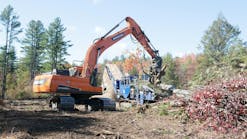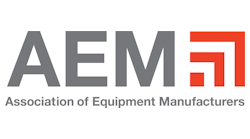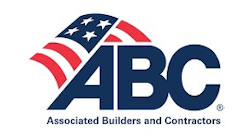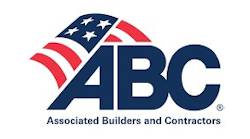To the casual viewer, a construction site would seem to be the realm of the huge earthmoving vehicles—graders, excavators, scrapers, wheel loaders, bulldozers, and the like. Less notable but still present in force are the much smaller job-site service vehicles busily backing up these large vehicles and equipment. Once you focus on these little brothers, you are likely to see them frequently throughout the life of the construction job. Some never leave the job site; others come and go whenever they are needed. All are devoted to keeping the increasingly more sophisticated and expensive earthmoving vehicles up and running with as little downtime as
possible.
Tim Davison, product manager for crane bodies at Stellar Industries of Garner, IA, states the importance of these support vehicles succinctly, saying, “Contractors would like to achieve no downtime at all if it were humanly possible. Just the prospect of a key loader or scraper having to go all the way back to the depot to repair a minor breakdown or getting scheduled preventive maintenance would make a contractor shudder. He wants that expensive vehicle to be up and running—and earning money—without delay. And job-site service vehicles with specialized bodies and equipment mounted on pickup trucks offer a way to preclude that delay, often reducing it to a matter of minutes.”
Originally, job-site service tended to be performed by a single, multipurpose truck, typically a mechanics truck, equipped to handle both preventive maintenance and some repairs onsite. But as the big equipment became more complex, a variety of specialized bodies—also mounted on pickup trucks—were developed to enable job-site service to efficiently perform more repair and maintenance tasks and keep the big trucks running. Joining the mechanics truck, new body types were developed. Many added articulating cranes or telescopic cranes; others were equipped as hydraulic loaders; others were outfitted with compressors or LP gas tanks; others had the capability to dismount, repair, and remount the huge tires on the big earthmoving vehicles; still others—lube trucks, lube trailers, lube skids, oil caddies—were specifically designed for rapid preventive maintenance in the field.
High-tech cranes and knucklebooms are becoming sophisticated features regularly installed on today’s service vehicles.
How Little is Little?
And these “little” service trucks were joined by bigger service trucks, so a range of standard and custom trucks with different sizes and capabilities entered the market. As a result, contractors could pretty much pick and choose exactly what they needed. Tim Worman, product manager of Commercial Vehicles for Iowa Mold Tooling (IMT), also of Garner, IA, describes the varying possibilities for a contractor.
“Our customers are increasingly concerned about fuel economy. Smaller mechanics trucks offer better fuel economy than bigger versions, and they also fill the niche need for customers who don’t require a full-sized mechanics truck. This includes customers who service small to mid-range equipment and have lighter lifting requirements. Contractors who service heavy equipment are still going to need larger mechanics trucks. Examples of customers most interested in smaller mechanics trucks include those in the utilities and rental markets, equipment dealers, and anyone running small to mid-range equipment.
“The most important consideration for buyers when looking at this size of truck—or any mechanics truck for that matter—is sizing the truck appropriately for the job. It is critical that the buyer have a solid understanding of crane capacity and available payload. The questions you have to ask yourself are how much weight are you going to lift and how often you plan to use the crane.
“I would caution buyers against purchasing a smaller mechanics truck based solely on economy. Of course, economy is and should be an important consideration in any equipment purchase, but it should not be the main deciding factor. The most important consideration when buying a mechanics truck is making sure that the truck satisfies the needs of the job so that it can be a revenue generator for your business. Buyers who ensure that lighter-duty mechanics trucks meet their lifting and payload needs see great benefits with smaller chassis. But if this size of truck does not meet the needs of their application, then the unit will probably be under-utilized and will not benefit the fleet.”
Transferability
These varied service trucks typically consist of specialized bodies mounted on standard truck chassis that range from three-quarter-ton pickups on up. Fleetwest Transferable Bodies of Phoenix, AZ, which offers its bodies with either steel or steel construction, specializes in matching its line of bodies to contractor needs and preferences. Manager Rick Johnson elaborates: “One of the advantages of having bodies that are transferable from one chassis to another is the fact a utility body will quite probably outlast the original chassis. For example, Autozone was using trucks with our bodies to service some of their buildings around the country, and, in the 18 months they used them for the project, they ran through four different trucks. The beauty of transferability is that the techs look at these bodies as their toolboxes; they might go through a lot of different trucks, but they retain these tool boxes that were organized the way they wanted it.
“What’s more, they don’t have to keep these trucks beyond their useful lives. The last thing you want is to send a mechanics truck out to make an emergency repair and have the service truck break down en route so the technician can’t get to the job site to make that emergency repair. Not only would that be embarrassing, it would be expensive in terms of downtime.”
A transferable body will sit on the bed of all standard pickup trucks, whether owned or leased—or even a replacement pickup truck you rent from a dealer for a day or two in an emergency. And if you have a body sized for a half-ton pickup truck, you can put that body on any larger size pickup truck you have. Transferable bodies sit on the bed of a truck; you just have to drill four holes, and four bolts hold it up and under the bed rail. The electrical interface consists of a quick-disconnect plug that can be installed just like a trailer connection.
“What’s more, this transferability makes it practical for us to maintain our bodies in stock,” Johnson points out. “That’s a real convenience for our contractor customers because they can get one without the big delay that would otherwise be needed both to get the body he wants from the manufacturer and to get the chassis shipped to the manufacturer to have the body installed. And then after he’s waited all this time, he’s acquired just one service vehicle. With a body sent from stock, he just mounts it on his desired standard pickup truck and installs it himself. With this approach, the factories never get involved.”
Johnson cites one of his favorite stories to illustrate this flexibility. “There’s a site contractor in Tucson that uses one of our bodies as an HVAC repair truck,” he says. “During the week, he has it sitting in the back of his pickup truck for ready use on site. Then, on Friday night, he comes home and lifts the body onto jacks in his garage. Then he uses his pickup throughout the weekend to take his family to the lake or go fishing or whatever else he wants to do at home. Then on Sunday night, he puts the body back on the truck ready to go to work the next morning. For him, this body really is his service toolbox, and it fits his lifestyle as well as his work style.”
Some of these trucks can include quite sophisticated equipment needed to test and service complex equipment and vehicles. Patrick Pickett, who owns and operates Kinetic Improvement Inc. of Albuquerque, NM, uses his job-site truck like a laboratory in the field for such specialized purposes as vibration testing, dynamic balancing, precision alignment, lubrication analysis, and onsite servicing of both vehicles and complex mechanical equipment such as pumps, blowers, cooling towers, hammer mills, and fans, to name a few, as well as vehicles.
“On a big construction site, we may be scheduled in, but usually we’re called in for an emergency—or what may be an emergency,” Pickett says. “Typically, they don’t know why, but the equipment ‘is rattling pretty good,’ so they want us to come out to the job site and figure out what’s going on. We’re used to that kind of uncertainty, so we have the equipment in our truck to find out what’s going on and fix it. With this equipment onboard, we are able to measure equipment vibration, and if from the vibration signature we find machine faults like dynamic imbalances and machine misalignments in the system, we have the capability to clean them up. The equipment is all in our truck at the job site, which may be many miles from a laboratory or a repair shop.”
Bring In The Cranes
Cranes are getting quite sophisticated, too. Stellar has introduced what it calls CDT, which stands for Crane Dynamics Technology. This trademarked system consists of a proprietary collection of features that control, power, and monitor the company’s new cranes that range from a 6,000-pound capacity up to a 14,000-pound capacity. According to Davison, “The system will indicate to the operator when the load being maneuvered is increasing the load moment of the crane. Indications are by visual and sensory signals built into the Stellar handheld controller using color-coded LED lights and varying cyclical vibrations. When the load approaches an overload situation, LED lights on the handheld control will indicate yellow for 80% capacity, red for 90% capacity, and flashing lights for 100% of rated capacity. In addition, the cyclical vibration increases frequency in the handheld controller to ensure the operator is aware of the approaching overload when keeping an eye on the load is critical.
“The new system allows operators who encounter an overload situation to productively operate through that overload situation by increasing crane capacity to nearly 120% of its normal operating capacity for a short period of time. This is achieved simply by pressing a button on the handheld controller. This allows an operator to finish the lift or get out of an overload situation, thus increasing productivity. After a short period of time, the crane returns to normal mode.”
Crane-equipped job site service trucks have become a staple of this unusual industry. Niagara Falls ON-based Palfinger Inc. (the North American subsidiary of Palfinger AG of Salzburg, Austria) has emerged as a world leader in the design and manufacturing of articulated cranes, in particular as a supplier of knuckleboom cranes. According to a Palfinger spokesman, “A knuckleboom crane looks just like a standard crane but bends in the middle, just like the knuckle on a finger. Its compact size gives many advantages over a stiff-boom crane:
- A knuckleboom cranes can easily be maneuvered around obstacles on a building site.
- A knuckleboom crane is lighter and more compact, so it allows more payload to be hauled.
- A knuckleboom crane has horizontal extensions that allow it to reach longer distances at a lower overall height.
- Most jobs that needed a stiff-boom crane can now be done with a knuckleboom crane. The reach of knuckleboom cranes has increased over the years…some extending as far as 120 feet.”
Specialized knuckleboom cranes are now used in many different applications, from new road construction down to pick-and-carry jobs. Such manufacturers as Palfinger have learned that if the right attachment is placed on a knuckleboom crane, it becomes a specialized piece of equipment that can handle virtually any job. All are versions of general-purpose knucklebooms that have been modified for job-specific applications. Since they can be modified for any specific application in minutes with the proper attachment, they are ideal for the varying tasks of jobsite service.
PM to Go
Less sophisticated, but no less important, are the lube and oil trucks that have become almost essential for routine job-site preventive maintenance. There is good reason for this, of course, particularly if earthmoving contractors are tempted to stretch out the PM interval rather than return their big machines to a depot “just” for preventive maintenance when they were in the middle of a big time-sensitive job.
“Basic preventive maintenance should never be neglected or delayed,’ says Bryan Hayes, the owner of Valley Engineering in Hastings, NE. “For one thing, it has to be done, and the used oil has to be recovered and taken offsite and disposed of. So all of our equipment is set up with waste oil collection and disposal capabilities. For another, with the cost of heavy equipment these days, PM is more important than ever. Studies have shown that more than 75% of vehicle failures are maintenance related. In the current economic slowdown, we’re seeing contractors extend the time between PM service, contending that downtime is too expensive. They’re ignoring the fact that a maintenance-related breakdown and repair will cause much longer downtime—as well as needless expense.”
The company supplies lube trucks, lube trailers, lube skids, and oil caddies for the construction industry, Hayes adds. “We custom-build these bodies according to the equipment to be serviced. Some of our trucks have as many as 10 compartments for the different types and viscosities of oil. We make small two- to three-tank systems that can be placed in the back of smaller service trucks. This is helpful for mechanics who are doing small repairs. For example, if a hose breaks on a piece of equipment, the smaller tank setup on these trucks supplies enough oil to replace what was lost.”
Siel Construction of Franklin NE has been one of Valley Engineering’s customers since 1993, when it purchased its first lube trailer. Siel is a grading contractor doing highways, site development, landfills—“pretty much anything that has to do with pipe or dirt” John Siel says. “We were able to get the trailers custom-made to our needs. The biggest tank we had included was for engine oil, but the trailers also handled transmission oil and hydraulic oil. We collect the used oils and save them. We have an oil burner at our shop, so when winter comes, we fire it up and burn the collected oil to heat the shop.”
Are they worth the cost?
“All in all, the cost of a job-site service truck is a pretty good investment—particularly if it lasts 16 years,” Siel adds. “The initial cost plus the annual license renewal is about the only cost, so it makes for a pretty cheap asset. We thought about increasing capability by getting service trucks equipped with cranes, but we decided that they wouldn’t pay off for our operations. We’re serious about our PM so we think our major repair needs will be minimal. If we do have one, we’re willing to bring it back to our shop for repair and pay for the downtime.
“Also, we have a pretty good relationship with Nebraska Machinery. They have nine locations in Nebraska and Iowa, and that territory is where most of our jobs are. They’ll repair an earthmoving machine at our job site with one of their 55 field service vehicles. These are heavy-duty 2-ton trucks that are specially outfitted with a crane, cutting torches, generators, and air compressors, plus a variety of specialized tools and service manuals for fast and accurate repairs. We could buy one of those, I suppose, but I don’t think it would be worth the investment, considering the amount we’d use it. I think what we have is just fine.”
For those companies that conclude that it would be worth the investment for their operations, there is yet another fundamental decision. Should they buy them, lease them, or rent them? Ownership is usually the choice of large-equipment distributors who can use them both to service their own machines on rent and to contract the service to contractors who may or may not be their machine customers. This was the choice of Romco Equipment Co. of Houston. “It’s a good fit for us,” says Romco’s Doug Leverall.
“We sell and rent excavators, motor graders, wheel loaders, compactors—the whole line,” he says. “There’s a large enough base of contractor customers to justify the cost and create service revenue. We send our lube and oil trucks out to several construction firms, either under contract or on an on-call basis. It’s good business, and it enables us to keep our on-lease or on-rent in tip-top shape when they return
them to us.”
Brandeis Machinery & Supply of Louisville KY uses a similar approach, according to Rodney Barnes, used equipment specialist. Brandeis, together with its sister company, Power Equipment Co., constitutes one of the largest construction and mining equipment networks in the US. Its 15 branches in the south central states sell and rent large earthmoving equipment including Komatsu, Atlas-Copco, Wirtgen, and Sennebogen. To support its customer base, Brandeis offers a long list of available service capabilities, including field service trucks, all-makes repair, preventive maintenance programs, and scheduled maintenance programs.
“We have shop repair centers that can do the truck repairs,” Barnes says, “but we have found that many repairs and maintenance tasks are often cheaper and easier to do onsite than to haul the big machines back to one of our repair centers. For bigger repairs, we can use a Stellar crane-mounted truck to bring an entire engine assembly back to a repair center, rebuild it there, and then use that same truck to take the rebuilt engine back to the field and reinstall it. That’s much more practical than loading the entire earthmoving machine on a lowboy trailer and trucking it. If the equipment doesn’t run at all, it’s quite difficult to load—particularly the blade assembly. It all takes time, and that’s downtime.”
And Now There’s Rental
Field service has been a large part of the construction business for a long time, points out Jennifer Ordeson, who works for IMT. But, she adds, what has not been the norm is field-service equipment for rent. That may be changing, she says, citing the case of Akron, OH–based QT Equipment.
Last Year, QT Equipment launched a nationwide rental program for service equipment, making it one of the country’s only locations to rent mechanics trucks, lube trucks, and articulating cranes. QT is a Diamond Authority Distributor for Iowa Mold Tooling Co. Inc. (IMT), and QT’s fleet of rental service equipment consists of IMT Dominator mechanics trucks, IMT SiteStar lube trucks and IMT articulating cranes, as well as the QT Lube Trailer.
Until QT launched its rental program, contractors had two choices if they needed to do field service: buy their own service vehicles or contract with a third-party service provider to fix breakdowns and take care of preventive maintenance schedules. Now there is a third option.
“Rentals are very popular with so many other types of equipment, but no rental company has tackled the service equipment business yet,” QT President Doug Root says. “The rental option is great for our customers who want the benefits of field service but aren’t quite ready to purchase their own equipment or who need a temporary fill-in unit.
Owning service trucks is generally a no-brainer for very large operations, and it usually makes good economic sense for mid-sized ones. But small contractors might need help figuring out how to justify the expense.
“Contractors often depend on steady cash flow, and renting a service truck avoids the capital expenditure of purchasing, which is especially attractive considering the current credit situation,” he says. “Also, companies on the fence about buying service trucks can rent a mechanics truck for a few months as a trial.
“Renting a service truck gives a company the chance to decide whether the benefits of significantly increased uptime on its equipment would outweigh the cost of buying a dedicated service truck. Smaller contractors that rent a service truck can begin to determine if buying one would end up saving money for them in the long run.”
QT is betting that rental will become a more and more popular option for job-site service truck operators. And Root predicts that service truck rental will continue to increase in popularity as we approach the 2010 emissions regulations and the addition of urea. Many contractors won’t want to be tied down to the long-term expense of these new trucks, and renting is an attractive alternative here.
Do It Yourself
Another procurement decision for prospective jobsite service operators is the selection of the chassis with the best match to the desired body. Again, there are options. Truck companies often provide the body installed on the selected chassis on a turnkey basis. The customer doesn’t even get to kick the tires before it is delivered to him complete with the body. If that bothers you, you can buy the chassis yourself after appropriate tire kicking. The body manufacturer will be happy to install the body on your chassis. Or they will deliver the body to you and you can install it yourself.









